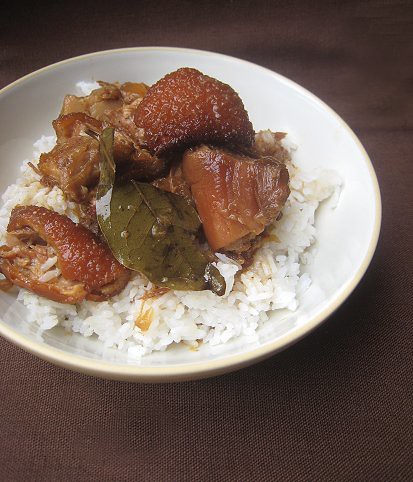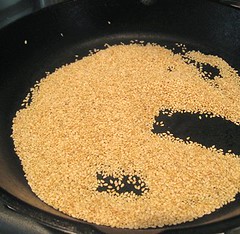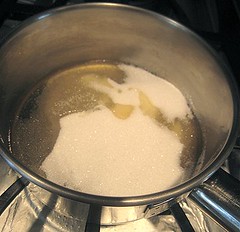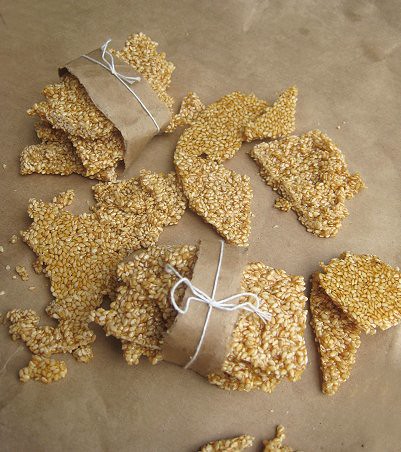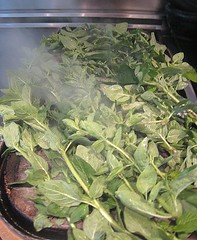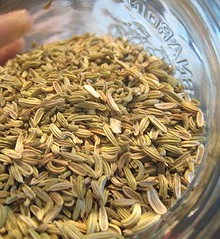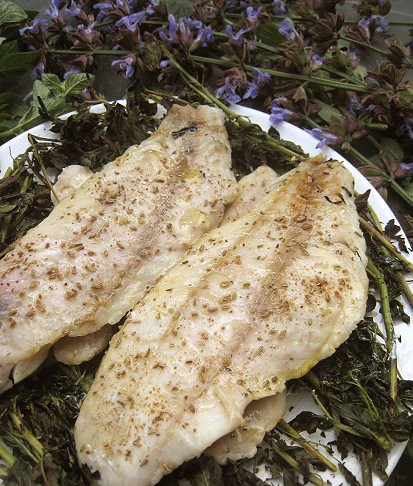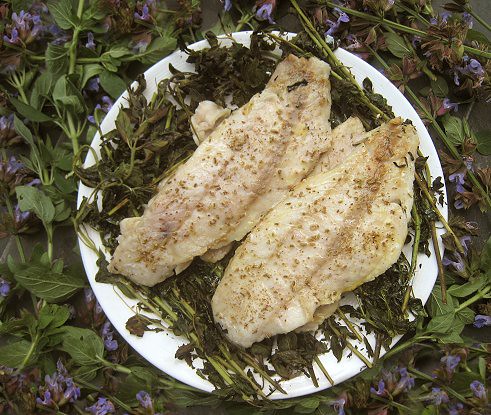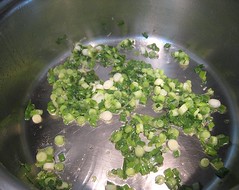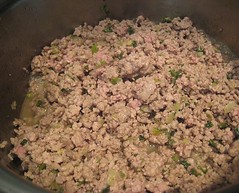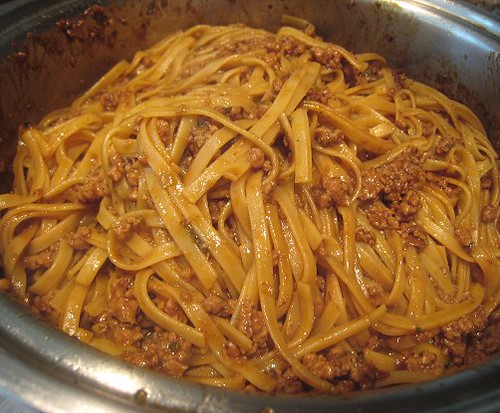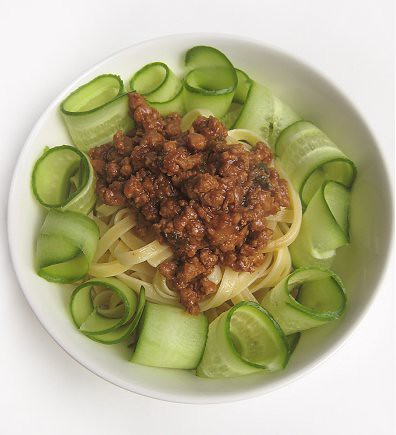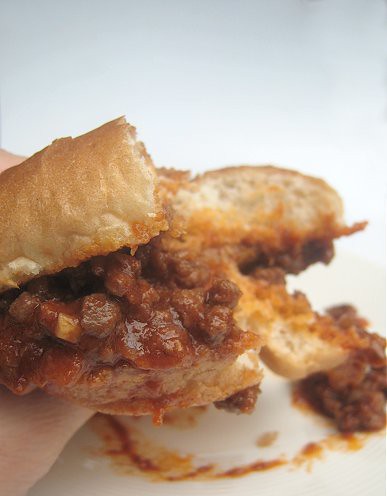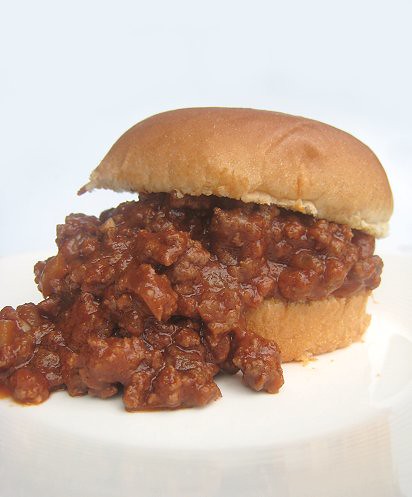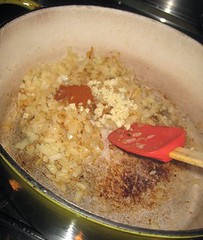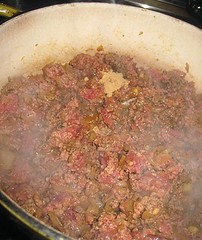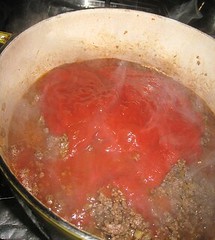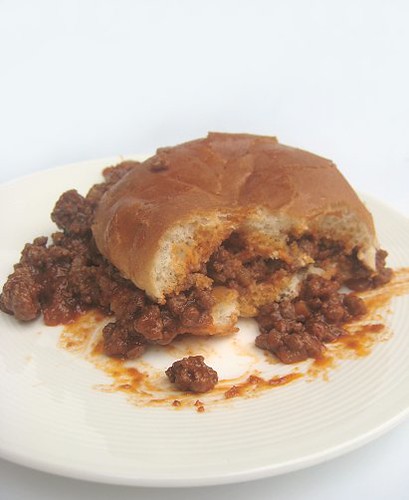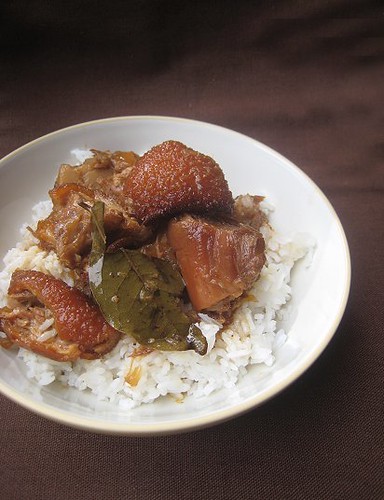
JS:
I think I'll call this version a "starter" paksiw na lechon. If you're not too keen on liver or liver sauce in your paksiw na lechon, then this is the recipe for you.
TS:
Let's backtrack a little bit. What is paksiw na lechon?
JS:
Paksiw na lechon is usually a stew done with leftover lechon (Philippine roast pork).
Most people I know look forward to this leftover stew more than the they look forward to the actual whole pig. Can't say I disagree, because, really, once the crispy skin is all eaten and done, what else is left?
leftover lechon TS:
TS:
We ordered a whole roast pig for Boss #2's birthday party about a month ago. We had about 3 pounds of leftover lechon the next day.
Usually, people simply add bottled lechon sauce -- Mang Tomas is a popular brand -- to the pork pieces and cook them together. However, both JS and I are not a big fan of bottled lechon sauce. It just tastes overly-sweet and not much else to me.
In fact, the bottled variety tastes nothing like "real" lechon sauce, which is a blend of liver, vinegar and sugar, among other things.
See JS' Homemade Lechon Sauce here.
Someone was actually surprised to taste liver in JS' homemade lechon sauce during Starry, Starry Night (our Philippine/Filipino food feast), having always had Mang Tomas!
JS:
I wanted this version of paksiw to be fairly accessible and entry-level for all palates.
Hence, I made it sans the liver/liver sauce, not particularly sour, and not at all spicy. I opted for a sour-sweet-salty flavour profile, with garlicky, peppery undertones.
TS:
We could've snuck in a can of Philippine liver spread, like when we made Pork Asado (Pork with Tomato-Pineapple Sauce). But, since I'm not a big fan of liver myself, I didn't bring it up. ;)
JS:
This is our favourite genre of recipe, the dump-into-a-pot genre.
I started by sweating some onions in a pot, after which I dumped the pork pieces in, and then added all my other ingredients: garlic, soy sauce, vinegar, brown sugar, peppercorns, cloves, bay leaves and some water. I left it to simmer for about an hour or so.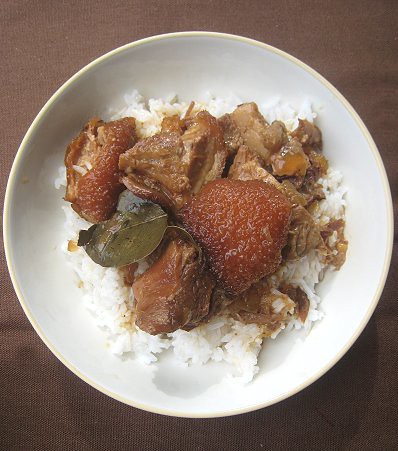
JS:
Sounds familiar, doesn't it? Almost like an adobo, but not quite -- the sweetness of it (from the onions and the brown sugar) takes it beyond straight-up adobo.
Ah, so good with a bowl of plain, white rice.
JS:
I like to eat paksiw with a touch more acidity, so I drizzled some sinamak (chile-infused vinegar) on mine. The added heat from the chiles are a delicious bonus.
More eatingclub Philippine/Filipino food
Other Lechon Paksiws:
Burnt Lumpia: Leftover Lechon
Market Manila: Paksiw na Lechon
Panlasang Pinoy: Lechon Paksiw
Paksiw information from Wikipedia:
Generally means to cook and simmer in vinegar. Common dishes bearing the term, however, can vary substantially depending on what is being cooked.from http://en.wikipedia.org/wiki/List_of_Philippine_dishes
Paksiw na isda is fish poached in a vinegar broth usually seasoned with fish sauce and spiced with siling mahaba and possibly containing vegetables.
Paksiw na baboy is pork, usually hock or shank, cooked in ingredients similar to those in adobo but with the addition of sugar and banana blossoms to make it sweeter and water to keep the meat moist and to yield a rich sauce.
Paksiw na lechon is roasted pork lechon meat cooked in lechon sauce or its component ingredients of vinegar, garlic, onions, black pepper and ground liver or liver spread and some water. The cooking reduces the sauce so that by the end the meat is almost being fried.
Enjoyed this post? Why not subscribe to our blog? Subscribe via reader or subscribe via email. Thank you! |
Recipe
"Starter" Paksiw na Lechon (Philippine Roast Pork simmered in Vinegar)
3 pounds cooked roast pork (lechon)
2 heads garlic 1 onion
1 1/4 cups vinegar (coconut, in this case)
3/4 cups soy sauce
2 cups water
1/2 cup brown sugar
3 bay leaves
1 tablespoon black peppercorns, slightly crushed
4 cloves
Break up the cloves of garlic and smash/bruise to peel. Slice or chop the onion.
In a pot, sweat the onions in some oil. Then, add the roast pork/lechon and the rest of the ingredients. Bring to a boil, then simmer on low heat for an hour or so, or until desired donesness./tenderness.
Serve over white rice.
